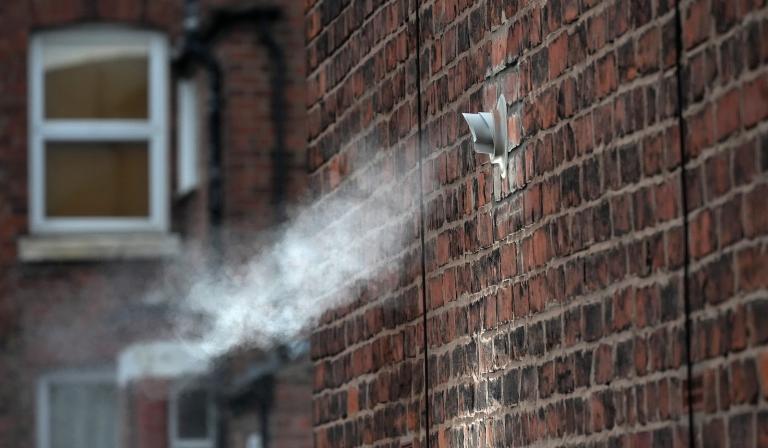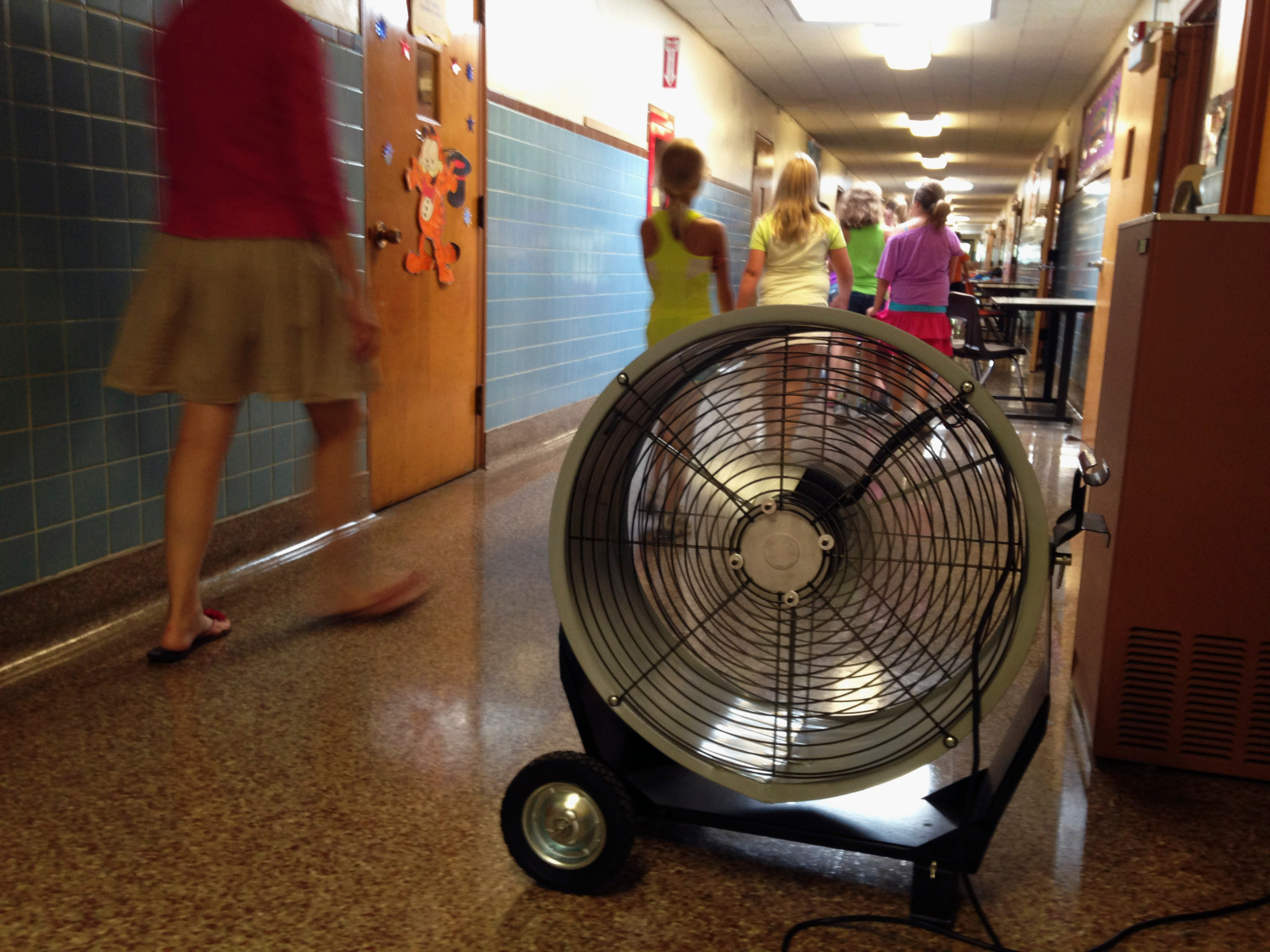School is back in session and teachers have more than lesson plans on their mind: outdated classrooms with little or no air conditioning makes teaching during heat waves near to impossible.
Columbus, Ohio teachers went on strike this past week, citing cooling systems in need of repair. In Clayton County, Georgia, elementary and middle schools are without proper cooling and hundreds of HVAC repairs need to be made to prevent, in some cases, hot air blowing out of vents and making classrooms inhospitable to students. The Baltimore City Public School system dismissed students at two dozen schools without air conditioning early this week as the city braces for a heatwave.
Classrooms are becoming hotter and hotter as global temperatures rise to extreme levels. These rising temperatures have a detrimental effect on how students learn and fixing them will cost millions of dollars, becoming a point of contention for educators. More and more schools are operating without proper cooling systems or need repairs since roughly 30 percent of all the nation’s schools were built between 1950 and 1969.
The Occupational Safety and Health Administration recommends a temperature range between 68 degrees Fahrenheit and 76 F for indoor office workplaces, while some cooling companies say 72 degrees is the most comfortable and has even improved test scores in certain situations. Classroom temperatures have risen above 80 F during the beginning and end of a school year in recent years. Columbus schools saw 14 school days break 80 F indoors in September and October last year. This week, classroom temperatures at Baltimore schools are expected to hit 93 F and have been as high as 100 F in the past.
Hot classrooms aren’t just a disruptor to the school day schedule; they are detrimental to students’ learning. A 2020 study found that for every 1-degree Fahrenheit temperature increase, student learning drops by 1 percent. This study also pointed to heat days disproportionately affecting students of color and how 73 percent of these heat-driven learning gaps could be prevented by the simple inclusion of air conditioning in schools.
Columbus teachers went on strike for four days after failed salary negotiations earlier in the summer, which included asking the school district to fix its outdated heating and cooling systems. Before the strike was initiated, salary negotiations inched closer to a conclusion, but the issue of fixing broken heating and cooling systems was still a sticking point.
Columbus City Schools is Ohio’s largest school district and has experienced the phenomenon of “heat days”—schools closing due to unsafe temperatures in outdated buildings—in recent years. At the start of last school year, the Columbus Education Association issued a statement urging the administration to fix the district’s busted air conditioning and ventilation system to ward off COVID-19 and impending heatwaves.
“We’re dealing with buildings that are way too hot in the warm months and way too cold in the cold months,” Regina Fuentes, Columbus teachers union spokesperson and district teacher, told NPR’s All Things Considered during last week’s strike.
The newly agreed upon contract commits to “planning for building improvements to ensure that spaces where children learn and teachers teach are climate controlled” by the beginning of the 2025-26 school year. This includes providing heating, ventilation, and air conditioning in facilities that are currently without and shoring up classrooms and buildings that operate with limited HVAC. Air conditioning isn’t a new request for teachers striking for better conditions. Ten years ago, the Chicago Teachers Union went on strike and at least one striking teacher reported she wanted “working air conditioning” among other demands. The Baltimore Teachers Union also has an ongoing donation drive to collect fans in preparation for future heat days.
Many schools across the country don’t have operating air conditioning and it eats at their budgets. A Government Accountability Office study found that, out of 100,000 K-12 public schools nationwide, nearly half needed to fix HVAC systems. Schools visited by the study commission cited older systems leaking and contributing to mold and poor indoor air quality on top of poor cooling on hot days.
Environmental advocacy organization Center for Climate Integrity, or CCI, conducted a study last year that tracked how much money school districts across the country have spent on upgrading heating and cooling systems in the past few decades. This analysis found that decades ago, school systems didn’t need air conditioning as much as they do now and they now have to shell out upwards of $40 billion to keep children cool.
The state of Ohio ranks eighth in the nation for monies spent on heating and cooling systems, according to this report, and improvements are still needed. New York comes in first for total equipment costs at nearly $7 billion, with Arkansas and Oklahoma both spending less than a million on cooling systems in recent decades.
“We’ve seen school districts across the country having to invest hundreds of millions of dollars in new infrastructure to keep classrooms at safe temperatures,” Mike Meno, CCI communications director, said. “This is becoming more and more of a problem and more and more of a common occurrence.”
Just this year, Detroit public schools invested $125 million in its HVAC system, despite its schools still needing to shorten their days to escape increased heat. In five years, 95% of its facilities will be updated with cooling systems. As teachers return to Columbus schools this week with a new union contract finalized, it will still take years to properly update their facilities.




